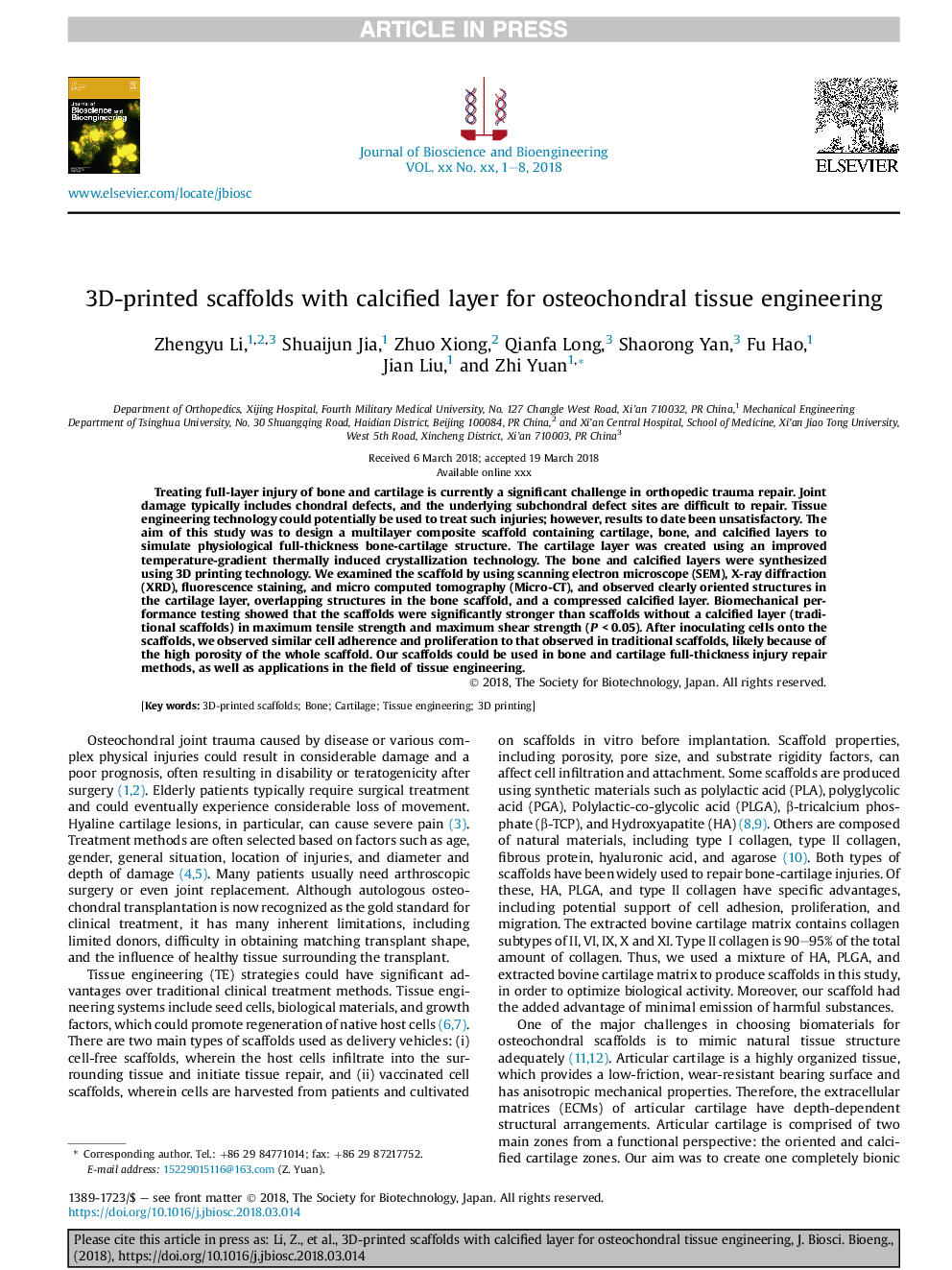| Article ID | Journal | Published Year | Pages | File Type |
|---|---|---|---|---|
| 6489597 | Journal of Bioscience and Bioengineering | 2018 | 8 Pages |
Abstract
Treating full-layer injury of bone and cartilage is currently a significant challenge in orthopedic trauma repair. Joint damage typically includes chondral defects, and the underlying subchondral defect sites are difficult to repair. Tissue engineering technology could potentially be used to treat such injuries; however, results to date been unsatisfactory. The aim of this study was to design a multilayer composite scaffold containing cartilage, bone, and calcified layers to simulate physiological full-thickness bone-cartilage structure. The cartilage layer was created using an improved temperature-gradient thermally induced crystallization technology. The bone and calcified layers were synthesized using 3D printing technology. We examined the scaffold by using scanning electron microscope (SEM), X-ray diffraction (XRD), fluorescence staining, and micro computed tomography (Micro-CT), and observed clearly oriented structures in the cartilage layer, overlapping structures in the bone scaffold, and a compressed calcified layer. Biomechanical performance testing showed that the scaffolds were significantly stronger than scaffolds without a calcified layer (traditional scaffolds) in maximum tensile strength and maximum shear strength (PÂ <Â 0.05). After inoculating cells onto the scaffolds, we observed similar cell adherence and proliferation to that observed in traditional scaffolds, likely because of the high porosity of the whole scaffold. Our scaffolds could be used in bone and cartilage full-thickness injury repair methods, as well as applications in the field of tissue engineering.
Related Topics
Physical Sciences and Engineering
Chemical Engineering
Bioengineering
Authors
Zhengyu Li, Shuaijun Jia, Zhuo Xiong, Qianfa Long, Shaorong Yan, Fu Hao, Jian Liu, Zhi Yuan,
